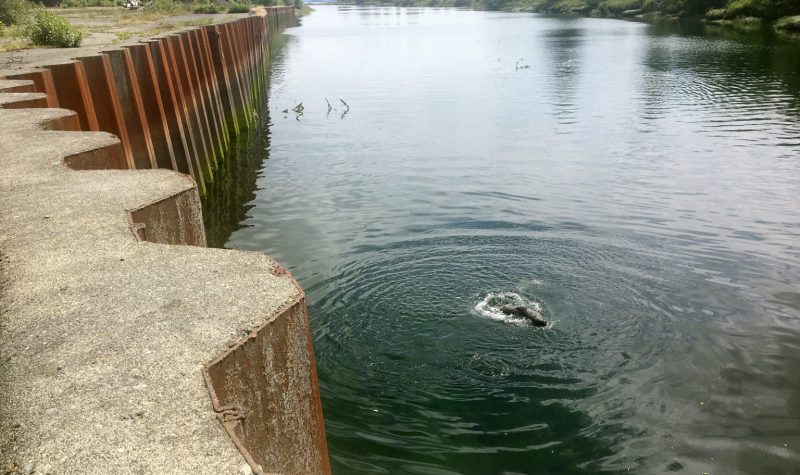By David P. Ball
---
Supporters of CRAB Park have long called for more habitat, wetland and shoreline ecosystem improvements. Now an ambitious project on Vancouver Island could provide clues — and inspiration.
How possible might it be for former industrial sites in Vancouver's Downtown Eastside to be reclaimed into thriving ecosystems? One Vancouver Island city and First Nation are pairing up to attempt just that, and several scientists say if it can be done there, it can be done in most cities.
One place that has long hoped for such a move in the DTES is CRAB Park founder Don Larson. He explains a longstanding call to the park board by the waterfront greenspace's supporters to expand the park westward to expand the failing bird wetland habitat, remove invasive plants, and improve the shoreline ecosystem.
The park board last summer voted to support expanding the park's space to allow ecosystem and shoreline restoration. But the land belongs to the port authority, which is a federal agency.
"That's one reason we worked to get CRAB park down there, there was nothing on the waterfront," Larson told The Pulse on CFRO. "But they planted all sorts of exotic trees that didn't take permanently — we need native, local plants and trees.
"We need the bird marsh to go into the parking lot, it needs to greatly expand, and it's clogged with invasive plants. And the Port of Vancouver did things like that down at New Brighton Park. The Park Board needs to pull out the invasive plants, the bird marsh dried out, and it needs … much more care by both the park board and port authority. I see no reason not to take out the asphalt …That's the desire."
In another city in the province, that is exactly what's happening, with biologists advising a partnership with the City of Courtenay and K’ómoks First nation. They have to fundraise at least $6.5 million to buy back the former Interfor sawmill site — now paved over and surrounded by a rusted massive corrugated metal wall where salmon find themselves decimated by waiting seals along the wall.
The effort is documented in depth in the Salish Sea Sentinel magazine's most recent issue.
Several scientists explained that ecosystem restoration can happen in any former industrial site, if the science is heeded carefully. But it's not just possible to bring wild salmon and other species back no matter how paved over the sites are. Dr. Colin Levings is a retired Department of Fisheries and Oceans marine biologists specialized in estuaries and estuary restoration.
"There are opportunities for places like that to be restored, and I think it can be successful," explained Levings, author of the authoritative Ecology of Salmonids in Estuaries Around the World: Adaptations, Habitats and Conservation. “There’s quite a body of evidence showing they can be restored quite effectively, with attention to the science of each particular estuary and the particular species people are interested in.”
For K’ómoks First Nation, which has lived on the estuary for millennia — the signs of which are present everywhere at low tide where the poles for ancient fish traps still jut from the sea floor, some documented as at least 1,300 years old.
"On the estuary flats here, there are fish traps all over the place, tens of thousands of stakes," said K’ómoks artist Andy Everson, who spent his childhood on the shores of the estuary near his grandmother's house. "For us it's a reminder of how bountiful this region was, that our people would be able to set up and maintain these traps, and they'd provide food.
"To know about what's happened to our river system over the years, from mining and diff industrial prac back in the day, this effort now to reinv that ecosystem … is important not only for our people, but for people of the entire Comox Valley. We want that to last for generations to come."
Read about the estuary restoration project on Vancouver Island and why scientists have hope it could happen anywhere in the Salish Sea Sentinel, where editor Cara McKenna and The Pulse on CFRO host traveled to the site this summer thanks to funding from the Institute for Journalism and Natural Resources.
And you can hear McKenna and Ball discuss the issue and hear from the experts in the full The Pulse on CFRO feature segment on what lessons CRAB Park might learn from K’ómoks estuary below.


